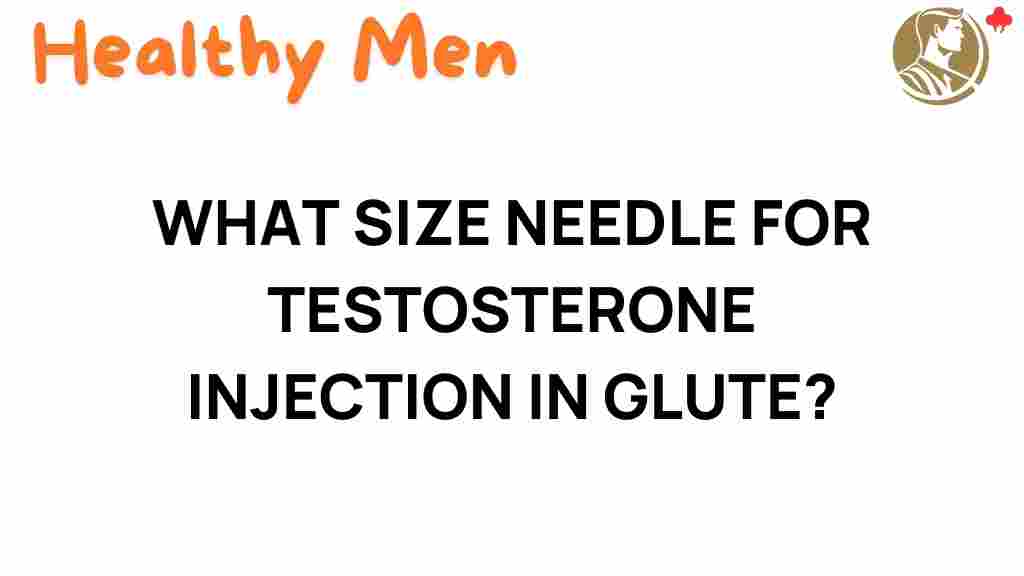Unraveling the Mystery: What Size Needle for Testosterone Injection?
Testosterone injections play a crucial role in hormone therapy for individuals with low testosterone levels. However, many people often find themselves puzzled about the appropriate needle size for administering testosterone injections, especially when considering glute injections. In this article, we will provide comprehensive insights into selecting the right needle size for testosterone injection, ensuring safe practices, and understanding the nuances involved in hormone therapy.
Understanding Testosterone Injections
Testosterone injections are a common treatment for those experiencing symptoms related to low testosterone levels, such as fatigue, depression, and decreased muscle mass. For effective treatment, it is vital to understand the different types of testosterone injections and how to administer them safely.
- Intramuscular (IM) injections: These are typically given in larger muscles like the gluteal muscles.
- Subcutaneous (sub-Q) injections: These injections are administered just beneath the skin, often in the abdomen or thigh.
Choosing the Right Needle Size for Testosterone Injection
The size of the needle used for testosterone injections is essential for both comfort and effectiveness. Size is typically determined by two factors: gauge and length. Here’s a breakdown of what you need to know:
- Gauge: Needle gauge refers to the thickness of the needle. A lower gauge number indicates a thicker needle. For testosterone injections, a gauge size of 22 to 25 is commonly recommended.
- Length: The length of the needle is also important, especially for IM injections. A needle length of 1 to 1.5 inches is generally appropriate for glute injections, while shorter lengths may be suitable for subcutaneous injections.
Factors to Consider When Selecting Needle Size
When choosing the appropriate needle size for testosterone injections, consider the following factors:
- Injection site: The gluteal muscle is often the preferred site for IM injections due to its size and depth.
- Body composition: Individuals with more body fat may require a longer needle to reach the muscle tissue.
- Personal comfort: Some may prefer thinner needles to minimize discomfort, while others may prioritize speed of injection.
Step-by-Step Process for Administering a Testosterone Injection
Administering a testosterone injection can be daunting, but following these steps will help ensure a safe and effective process:
1. Gather Your Supplies
You will need the following:
- Testosterone vial
- Appropriate needle and syringe
- Alcohol swabs
- Sharps container for disposal
2. Prepare the Injection Site
Choose a suitable injection site, such as the glute. Clean the area with an alcohol swab and allow it to dry.
3. Draw the Testosterone
Using the syringe, draw air into it equal to the amount of testosterone you will inject. Insert the needle into the vial and push the air in. This helps in drawing the testosterone easier. Then, draw the correct amount of testosterone into the syringe, ensuring there are no air bubbles.
4. Inject the Testosterone
Hold the syringe like a dart and insert the needle at a 90-degree angle to the skin. Quickly push the plunger down to inject the testosterone. Withdraw the needle swiftly.
5. Dispose of the Needle Safely
Immediately place the used needle and syringe into a sharps container for safe disposal.
Troubleshooting Common Issues
Here are some common issues that may arise during testosterone injections and how to troubleshoot them:
- Difficulty drawing the testosterone: Ensure the vial is properly pressurized by injecting air before drawing. If still difficult, gently swirl the vial.
- Bleeding or bruising: Apply gentle pressure to the injection site for a few minutes after the injection to minimize bleeding.
- Pain at the injection site: Rotate injection sites to allow the muscle to heal. You can also apply a warm compress to the area before injecting.
Medical Guidance and Safe Practices
Always consult with a healthcare professional when considering testosterone therapy. Medical guidance is essential to determine the appropriate dosage, frequency of injections, and monitoring of side effects. Here are some safe practices to follow:
- Follow prescribed dosages: Stick to the dosage recommended by your healthcare provider.
- Keep a clean environment: Maintain cleanliness to prevent infection.
- Monitor your health: Regular follow-ups with your doctor are crucial to monitor hormone levels and overall health.
The Role of Testosterone in Fitness and Health
Testosterone plays a vital role in muscle development, fat distribution, and overall health. For those engaged in fitness, proper testosterone levels can support:
- Muscle growth: Testosterone enhances protein synthesis, aiding in muscle repair and growth.
- Fat loss: Adequate testosterone levels can help reduce body fat percentage.
- Improved mood and energy levels: Testosterone contributes to better mood and energy, which can enhance workout performance.
Conclusion
Understanding what size needle for testosterone injection is crucial for effective hormone therapy. By carefully selecting the right gauge and length, and following safe practices, you can ensure a comfortable and effective injection process. Always prioritize medical guidance and regular health monitoring to optimize your testosterone therapy experience. For more resources on hormone therapy and safe injection practices, check out this informative guide.
In conclusion, whether you are new to testosterone injections or looking to improve your technique, being informed and prepared will help you navigate this important aspect of your health and fitness journey.
This article is in the category Conditions and created by healthymen Team
